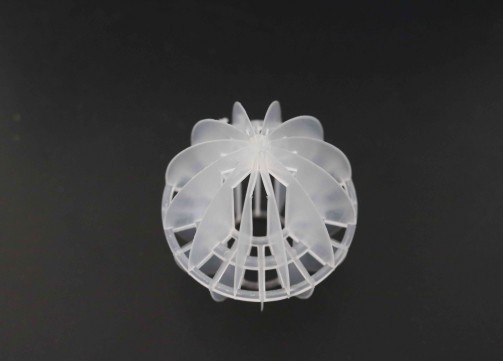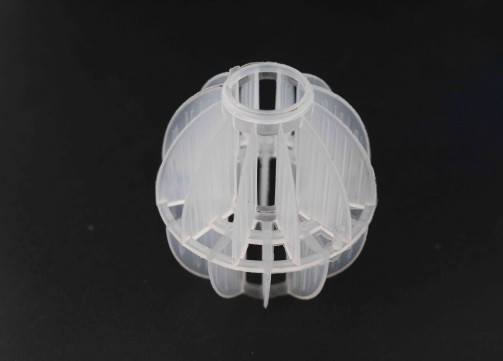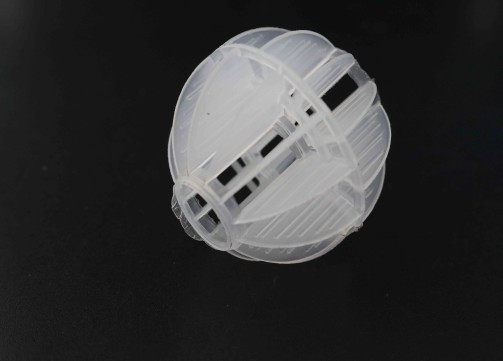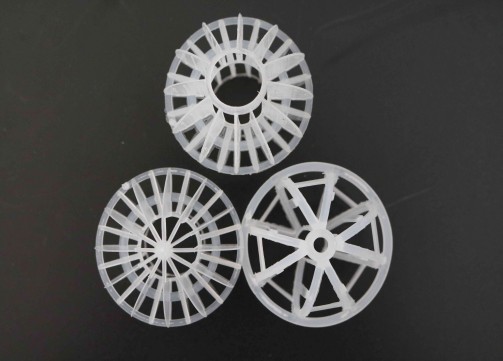Address
No.88, Qilian Street, High-Tech Zone, Shijiazhuang, Hebei 050000, China
Tel
+86 311 6779 0805
+86 188 4915 5666




### **Plastic polyhedral hollow ball: Product Overview**
Plastic polyhedral hollow ball is also called multi-aspect hollow ball or polyhedral hollow ball packing, is a new type of high efficient random packing. It is made from heat resistant and chemical stable plastic material, such as PP, PE, PVC, CPVC and RPP. It is composed of two hemispheres to form a whole ball shape. Each hemisphere surface has several half fan-shape leaves, the upper and lower leaves are staggered arranged.

**Plastic polyhedral hollow ball** are a type of high-efficiency random packing designed for gas-liquid and liquid-liquid contact processes. Their unique geometry and lightweight structure make them ideal for applications requiring large surface area, low pressure drop, and corrosion resistance. Widely used in environmental engineering, chemical industries, and wastewater treatment, they excel in enhancing mass transfer efficiency while minimizing energy consumption.
### **Structural Features**
1. **Hollow Multi-Sphere Design**:
- Composed of multiple interconnected hollow spheres, forming a lattice-like structure with internal cavities and external grooves.
- Surface openings (windows) and internal ribs create turbulence and maximize gas-liquid interaction.
2. **Lightweight Construction**:
- Thin-walled hollow structure reduces overall weight while maintaining mechanical strength.
3. **Material Options**:
- **Plastic**: Polypropylene (PP), polyvinyl chloride (PVC), or polytetrafluoroethylene (PTFE) for corrosion resistance.
- **Ceramic**: For high-temperature or highly corrosive environments.
- **Metal**: Stainless steel or titanium in specialized applications.
### **Classification**
1. **By Material**:
- **Plastic Hollow Balls**: Most common, cost-effective, and resistant to acids/alkalis (e.g., PP hollow balls for scrubbers).
- **Ceramic Hollow Balls**: Thermal stability up to 1000°C, used in high-temperature gas treatment.
- **Metal Hollow Balls**: Rare, used in high-pressure reactors or extreme conditions.
2. **By Size**:
- Diameters typically range from **25 mm to 150 mm**, with smaller sizes for precision packing and larger sizes for high-flow systems.
3. **By Surface Design**:
- **Smooth Surface**: Standard for general-purpose use.
- **Textured/Ribbed Surface**: Enhanced turbulence and liquid distribution.
### **Key Advantages**
1. **High Surface Area-to-Volume Ratio**:
- The multi-sphere design provides extensive contact surfaces for efficient mass transfer.
2. **Low Pressure Drop**:
- Hollow structure and open windows reduce resistance to fluid flow, lowering energy costs.
3. **Excellent Corrosion Resistance**:
- Plastic and ceramic variants withstand harsh chemicals (e.g., HCl, SO₂ scrubbing).
4. **Lightweight & Easy to Install**:
- Significantly lighter than metal or ceramic Raschig rings, reducing tower load.
5. **Durability**:
- Resistant to thermal deformation and chemical degradation over long-term use.
### **Applications**
1. **Gas Absorption/Scrubbing**:
- Removal of acidic gases (e.g., SO₂, NOx, HCl) in environmental scrubbers.
2. **Wastewater Treatment**:
- Aeration tanks for oxygen transfer in biological treatment processes.
3. **Cooling Towers**:
- Heat dissipation and water cooling through enhanced evaporation.
4. **Chemical Reactors**:
- Catalytic reactions or solvent recovery in distillation columns.
5. **Desalination**:
- Packing in deaerators to remove dissolved gases from seawater.
### **Comparison with Other Packing**
- **Vs. Pall Rings**:
- Plastic polyhedral hollow ball offer **lower pressure drop** and better **corrosion resistance** but slightly **lower mechanical strength** in plastic variants.
- **Vs. Structured Packing**:
- Easier to install and cheaper, though less efficient in ultra-high-purity separations.
### **Why Choose Plastic polyhedral hollow ball?**
They are a cost-effective solution for systems prioritizing **low energy consumption**, **chemical resistance**, and **high throughput**, particularly in corrosive or high-moisture environments.